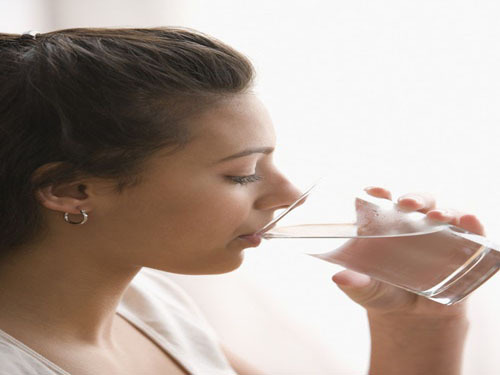Drinking water safety issues

In recent days, the news that "a large number of antibiotics were found" in rivers and tap water has caused public concern about the safety of drinking water. Some pharmaceutical companies suspected of pollution were exposed, and people's doubts about water quality standards and sewage standards have also become hot spots.
In this regard, experts told the public that there is no need for panic attacks on antibiotics in tap water. There are several reasons. First, the concentration of antibiotic amoxicillin detected in tap water is 8 ng/l. According to this concentration, drinking 10 cups of water a day is equivalent to eating 0.8 g of amoxicillin in 100,000 years; Even though antibiotics in the environment may lead to bacterial resistance, it is not yet possible to establish a corresponding relationship between bacterial resistance and dose of antibiotics. People are worried “is a risk, not a detriment to the factâ€; third, antibiotics are biodegradable. The concentration of antibiotics in the environment can be completely controlled at a safe level.
The "Antibiotic Resistance: Global Monitoring Report" issued by the World Health Organization on April 30, 2014 pointed out that the serious threat of antibiotic resistance is no longer a prediction in the future, but a reality that has already occurred in all regions of the world. And it affects everyone, regardless of their age or nationality. Investigations in 114 countries and regions around the world have found antibiotic resistance in all areas. Among them, seven different bacteria that are resistant to common diseases such as blood infections (septicemia), diarrhea, pneumonia, urinary tract infections, and gonorrhoea are resistant to antibiotics. The drug is most common.
Bacterial resistance is of course related to people's heavy use of antibiotics. China is the world's largest country that uses antibiotics in the breeding industry, as well as countries that use a lot of antibiotics in medical treatment. This will undoubtedly leave antibiotics in the ecological soil and various Water, and its content is much higher than some countries with better control of antibiotics. Compared with the detection of antibiotic concentration in surface water in developed countries, the concentration of antibiotics is less than 20 ng per liter. In some areas of China, the concentration of antibiotics detected in surface water is as high as several hundred nanograms per litre.
Although the relationship between the amount of antibiotic residues in the environment and bacterial resistance has not yet been specifically quantified, the relationship between higher antibiotic residues and bacterial resistance in the environment has been difficult to remove.
After exposure to a high concentration or a large amount of antibiotic residues in the environment, the bacteria's survival instincts make it resistant to drugs, and bacterial resistance can be transmitted to other bacteria through a level of gene transfer. This type of gene exchange not only allows the bacteria to have more tenacious viability, but also rapidly and widely spreads resistance to other bacteria.
Although there is no need to panic in the presence of antibiotic residues in drinking water, disregarding this phenomenon may not only trigger greater panic in the future, but also create an untenable situation. Therefore, the formulation of standards for antibiotic residues in drinking water and the supervision of the discharge of pollutants by pharmaceutical companies are not only a matter of urgency, but the use of antibiotics at the source must be fundamentally resolved. In these areas, some countries have long been at the forefront. The United States has restricted the use of antibiotics in the aquaculture industry since 2014. The United Kingdom has also implemented the rule of limiting the use of antibiotics in medical treatment if doctors prescribe for patients who do not meet the use of antibiotics. Antibiotics will be punished until the medical license is revoked.
Of course, the key to water quality safety lies in the treatment of water quality, that is, water is advanced through the water quality processor. In China, water quality treatment is gradually receiving attention, and the sales of water quality processors are also increasing year by year. According to rough estimates from relevant industry associations, the annual sales volume of water quality processors has reached more than 30 million units.
Pure water technology: the reverse osmosis membrane precision filtration technology. It is worth noting that the pure water produced by this technology is currently in dispute. First, some experts believe that long-term use of pure water as the only drinking water is not good for human health. The second is that it is a waste of pure water. Making a glass of pure water requires two cups of water, which is not in line with the concept of water saving.
Water purification technology: The water purifier uses municipal tap water as a water source and is used for drinking after purification. The structure of the filter element for domestic water purifiers is roughly classified as coarse filtration, activated carbon adsorption, ion exchange resin, hollow fiber resin, and hollow fiber. The first-class filter water purifier has a simple structure and is mainly activated carbon, and its filtering capacity is limited, and it can only be used as coarse filtration. The multi-stage filtration water purifier has two stages of coarse filtration and one group of fine filtration, and the fine filtration uses hollow fiber filters, and the filtered water can be directly consumed. At present, the above-mentioned water purification technology is relatively mature, and consumer demand for water purifiers has rapidly expanded, but the market environment is relatively poor. The technology should be given priority in the future.
Experts said that the current penetration rate of water purifiers in China is less than 5%, which is far less than the 70% penetration rate of developed countries such as Europe, America and Japan. In the frequent occurrence of water pollution incidents, China's water purifier market has much room for improvement.
Pumpkin Cubes For Canned,Dried Pumpkin Cube,Air Dried Pumpkin,Dpumpkin Cubes Dried
Shanghai Sinospices Sourcing Ltd , https://www.garlicall.com